7 Things You Might Not Know About Illuminated Manuscripts
An Illuminated Manuscript is a beautifully crafted book, but it’s also so much more—it’s a literal piece of art history.
Illuminated manuscripts are hand-crafted books with pages that feature elaborately decorated pages adorned with gold, silver, and brightly-colored paints. The books were most popular in Western Europe during the Middle Ages, with the majority of them made between 500 and 1600 C.E. Their subject matter mainly focused on Christian beliefs and practices—many of these remarkable pages were originally created for prayer books or hymnals.
Found on these pages are some of the finest examples of medieval portraiture and calligraphy in history, making them cherished additions to museum and gallery collections all over the world. To learn more about these intriguing treasures from the past, here are seven fascinating facts you may not know about illuminated manuscripts.
(Images below show the front and back of each leaf)
1. They’re As Old, If Not Older, Than “Mona Lisa”
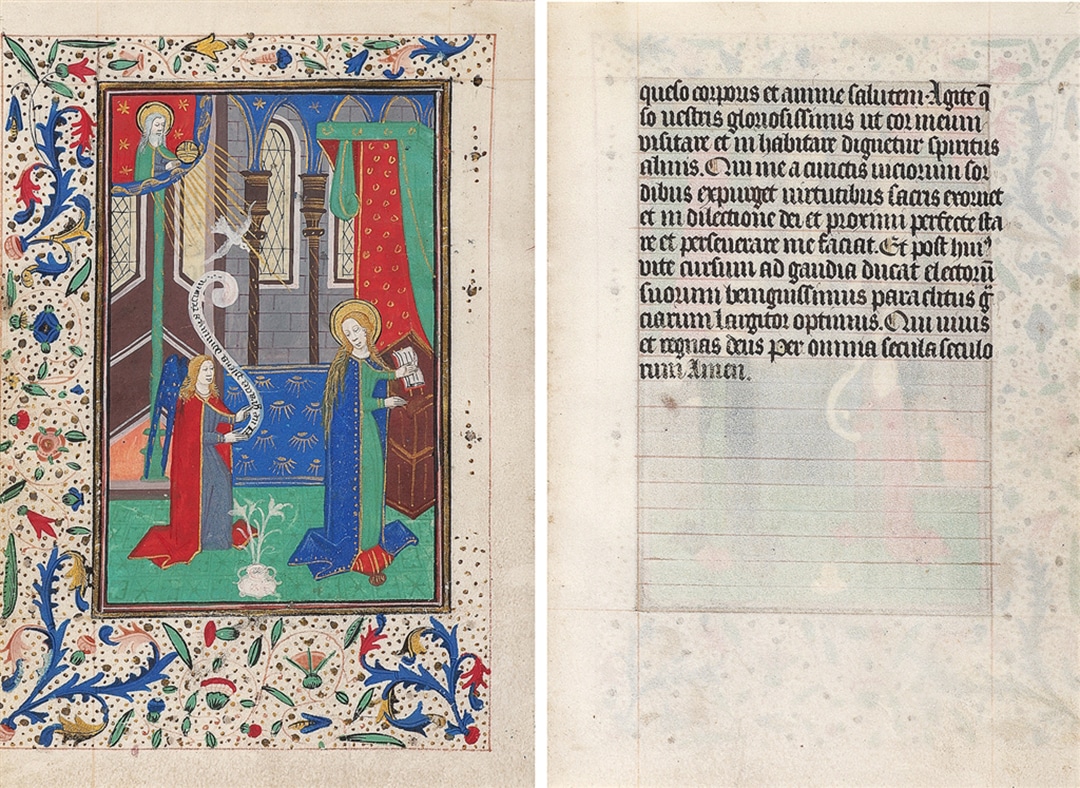
“Leaf from a Book of Hours” (c. 1450)
To put their extreme age into context, many illuminated manuscripts date back to the 13th and 14th centuries. They actually predate Leonardo da Vinci’s “Mona Lisa” and Michelangelo’s “David,” which were both created in the early 16th century.
2. They Somehow Survived for Centuries
The fact that these delicate pages have remained intact for centuries could be considered miraculous. The pages themselves are vellum (parchment made from animal skin) and the paints are plant-based, so if not cared for, they are extremely susceptible to deterioration.
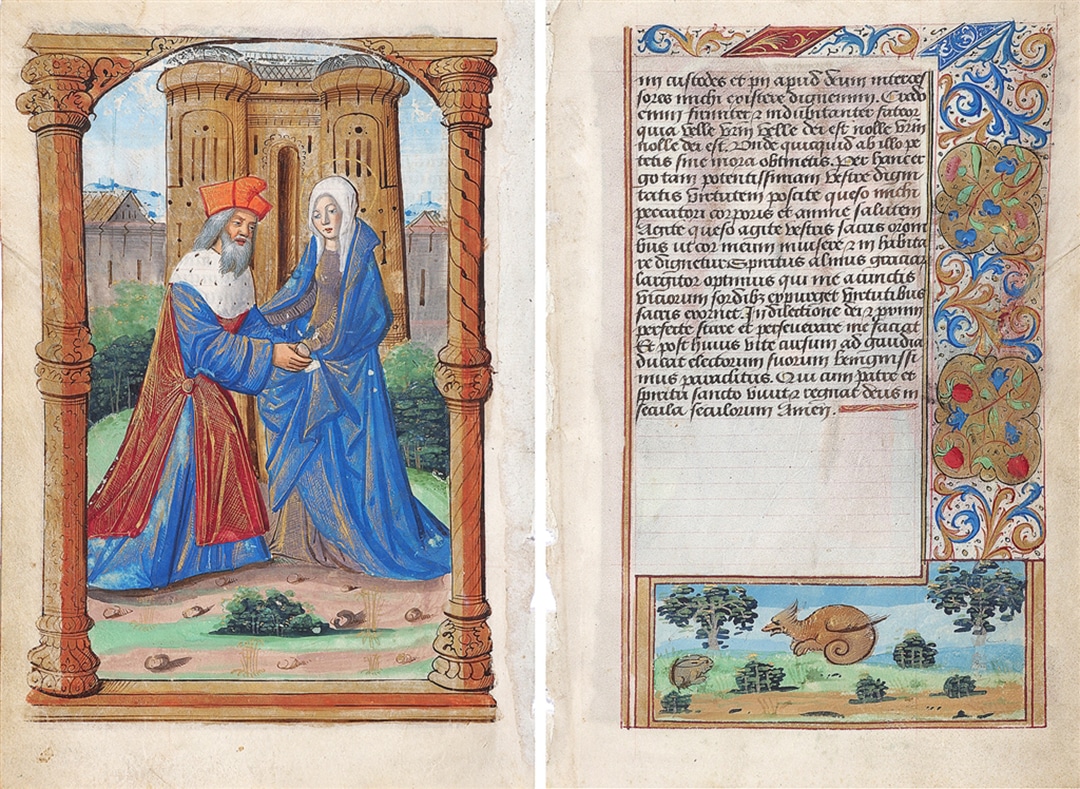
“Leaf from a Book of Hours” (c. 1510)
In many cases, illuminated manuscripts are the only surviving examples of artwork from certain areas and time periods.
3. Each Manuscript Was Handmade
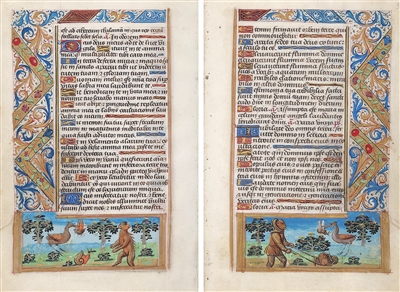
Leaf from a Book of Hours (c. 1510)
Illuminated manuscripts predate the invention of the printing press (around 1455), so each book was written and decorated by hand. This means every single page is a unique work of art.
4. Yes, That is Real Gold on the Page
Illuminators would pound gold until it was thinner than paper to gild the pages. They also brushed on gold specks with a process known as burnishing, resulting in pages full of shimmering artwork.
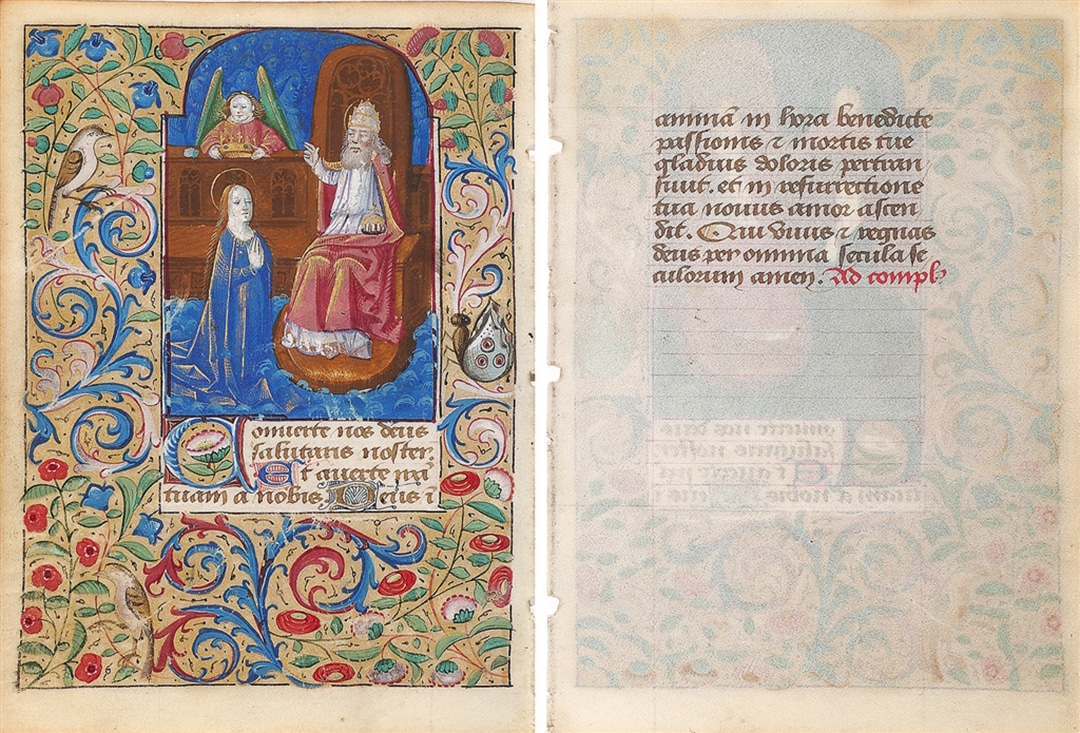
“Leaf from a Book of Hours” (c. 1480)
Illumination was used to help exalt the religious text found within each book, and scribes considered the use of gold to be a form of praising God.
5. Illuminated Manuscripts Were Considered Symbols of Wealth
Initially, illuminated manuscripts were created solely for monasteries. However, wealthy rulers and patrons began commissioning them for their own personal use or as gifts.
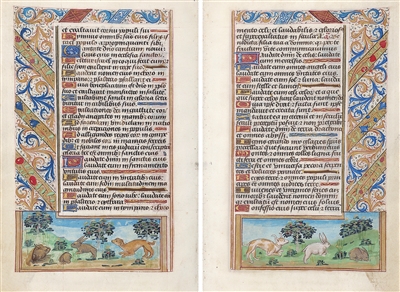
Leaf from a Book of Hours (c. 1510)
By the mid-15th century, illuminated manuscripts were commercially reproduced and featured non-religious subject matter. By the 16th century, production plummeted to a record low, and once again, illuminated manuscripts were only reserved for the wealthy.
6. They’re Windows Into History
Thanks to monograms, inscriptions, and artisan markings, the origins of these pages can be traced back to their original owners or illustrators.
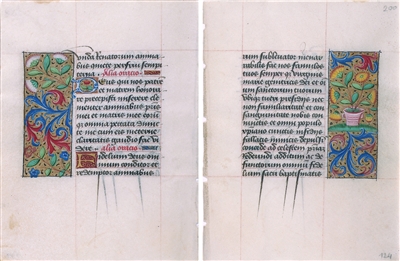
“Leaf from a Book of Hours” (c. 1500). This Book of Hours might have been in the possession of Catherine de’ Medici (1519-89), wife of Henri II, King of France. The binding includes fleur-de-lis and her monogram.
For instance, pages dating to c. 1500 from a Book of Hours in the Park West Gallery collection most likely belonged to Catherine de’ Medici (1514–1589), wife of French king Henry II. The binding on the book includes the royal fleur-de-lis and Catherine’s personal monogram.
The book was later given to the Celestine Monastery of the Holy Trinity of Marcoussis, France.
7. Occasionally, They Have Eccentric Imagery
As illuminated manuscripts were primarily created for religious purposes, a lot of the imagery is what you’d expect: Biblical scenes like the crucifixion, depictions of angels and saints, and so on.
But, sometimes, the artists spiced things up in the margins and blank spaces. For example, in a Book of Hours created c. 1480 in Paris, one page inexplicably has an illustration of a monkey perched on a cannon. We’re not sure why the artists in the workshop of Father Francois Barbier did this, but it’s amusing to say the least.
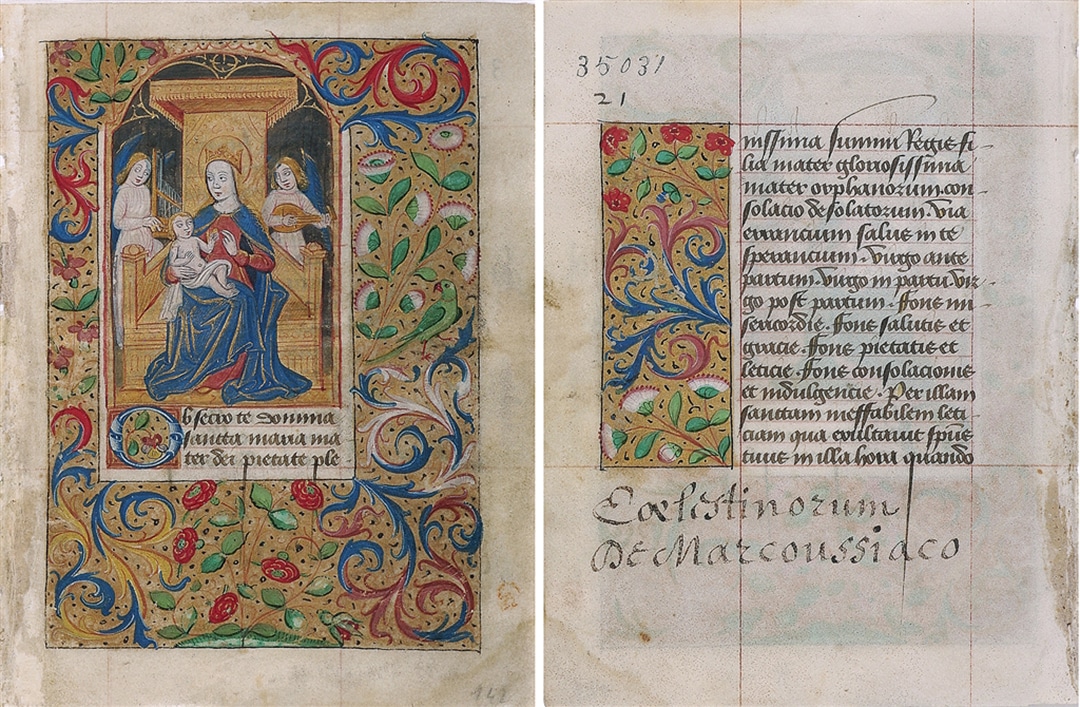
“Leaf from a Book of Hours” (c. 1500)
Some of the finest examples of illuminated manuscript pages are currently on display at the Park West Museum, located in Southfield, Michigan. In addition to individual leaves, visitors can peruse a digital version of a rare illuminated manuscript from the 13th and 14th centuries. This 162-page antiphonal is the only recorded volume of its kind to survive intact and complete.
If you’re interested in collecting one of Park West Gallery’s Illuminated Manuscripts, you can attend one of our exciting live online auctions or contact our gallery consultants directly at (866) 652-0892 ext. 4 or sales@parkwestgallery.com.





